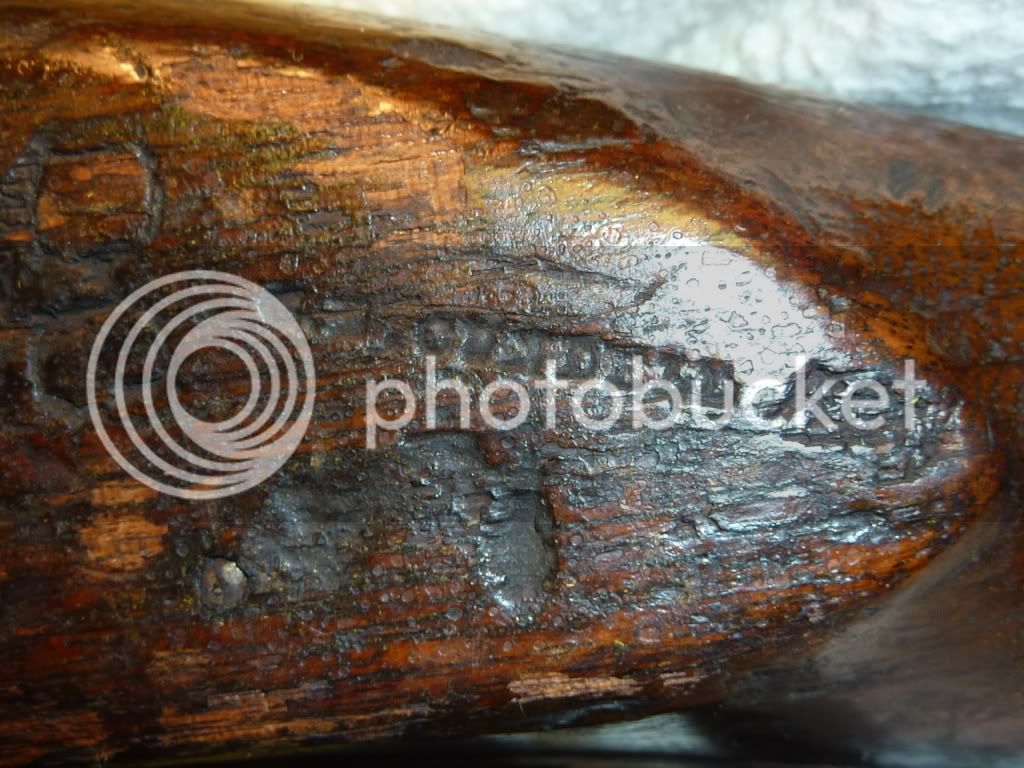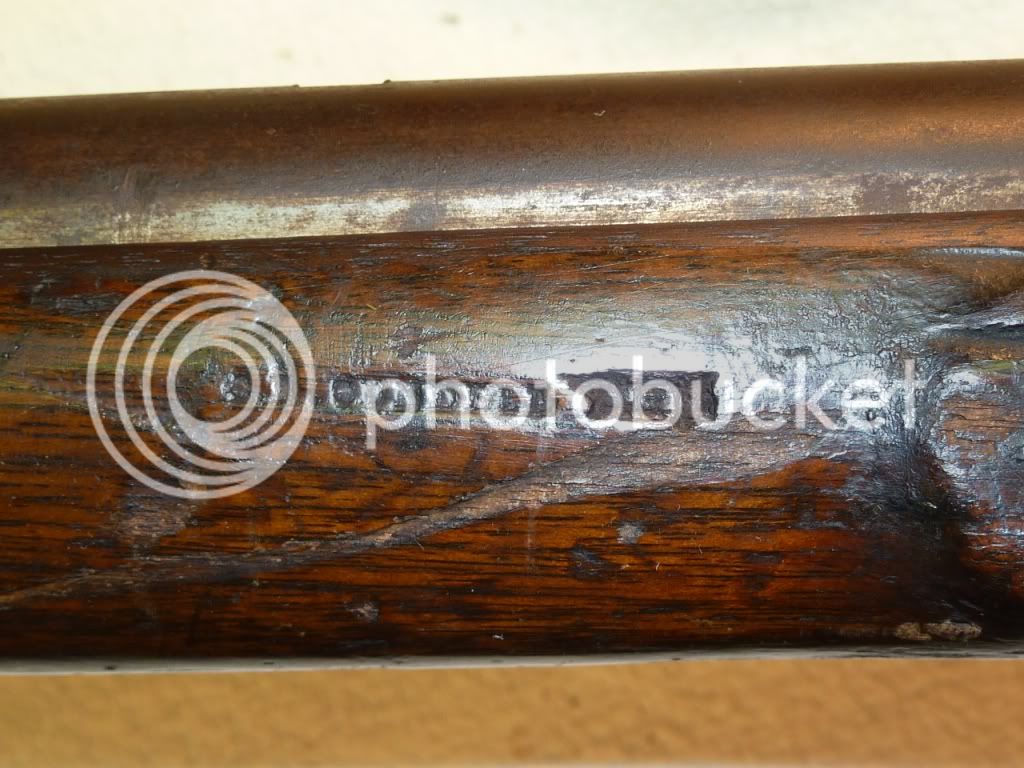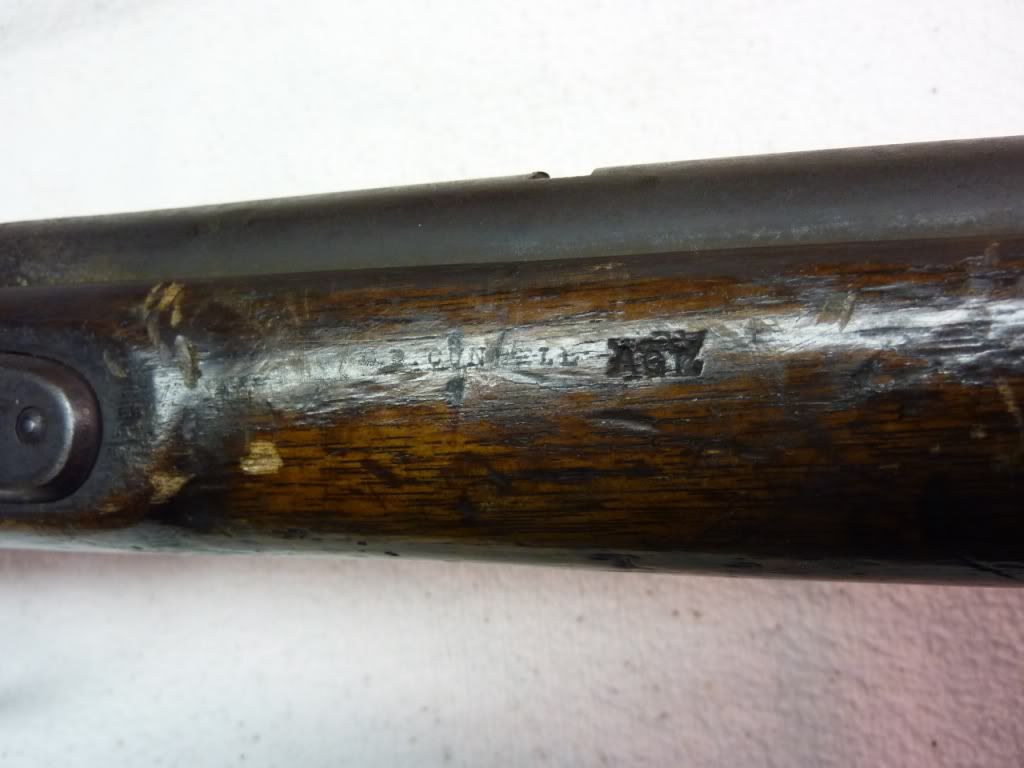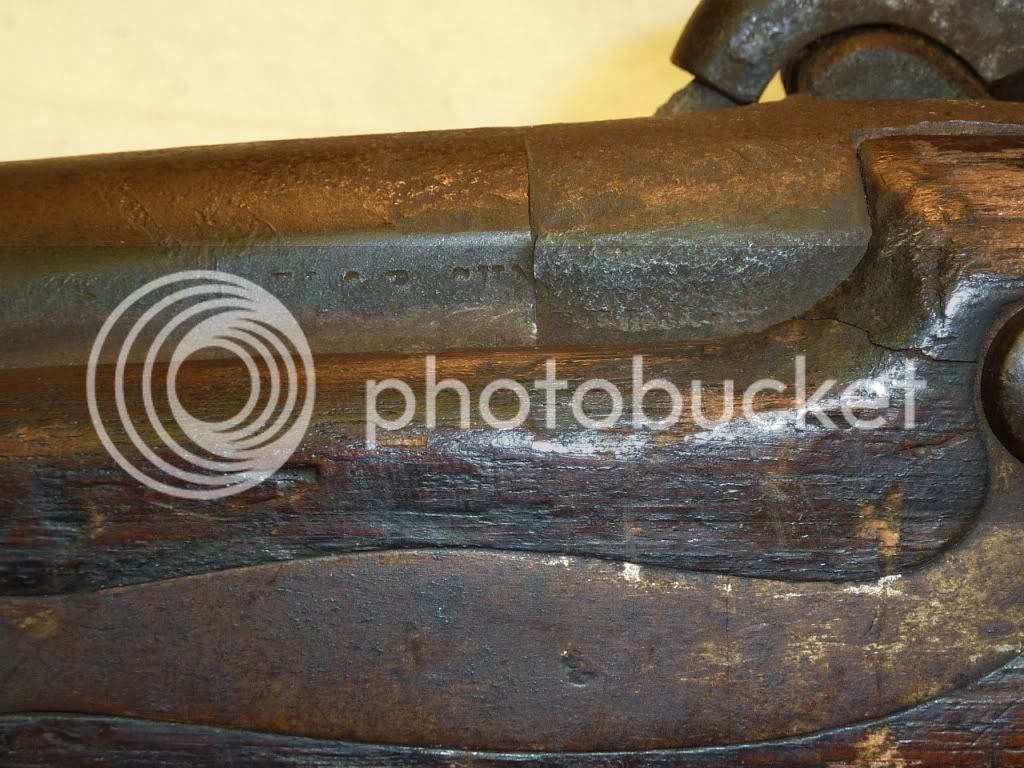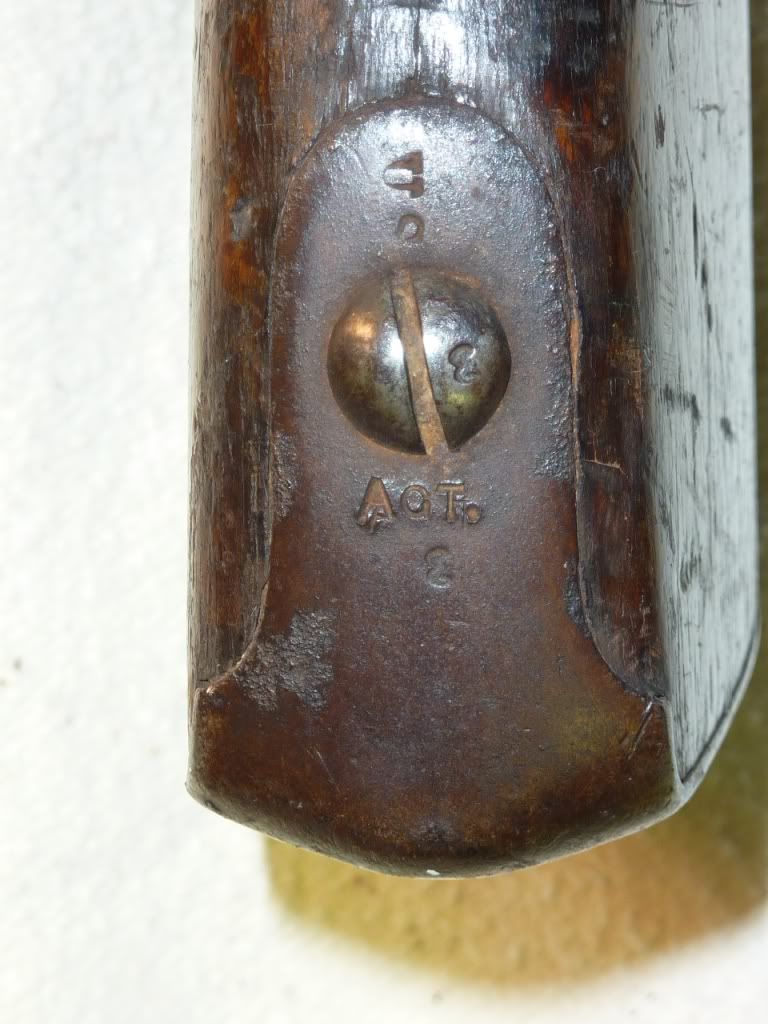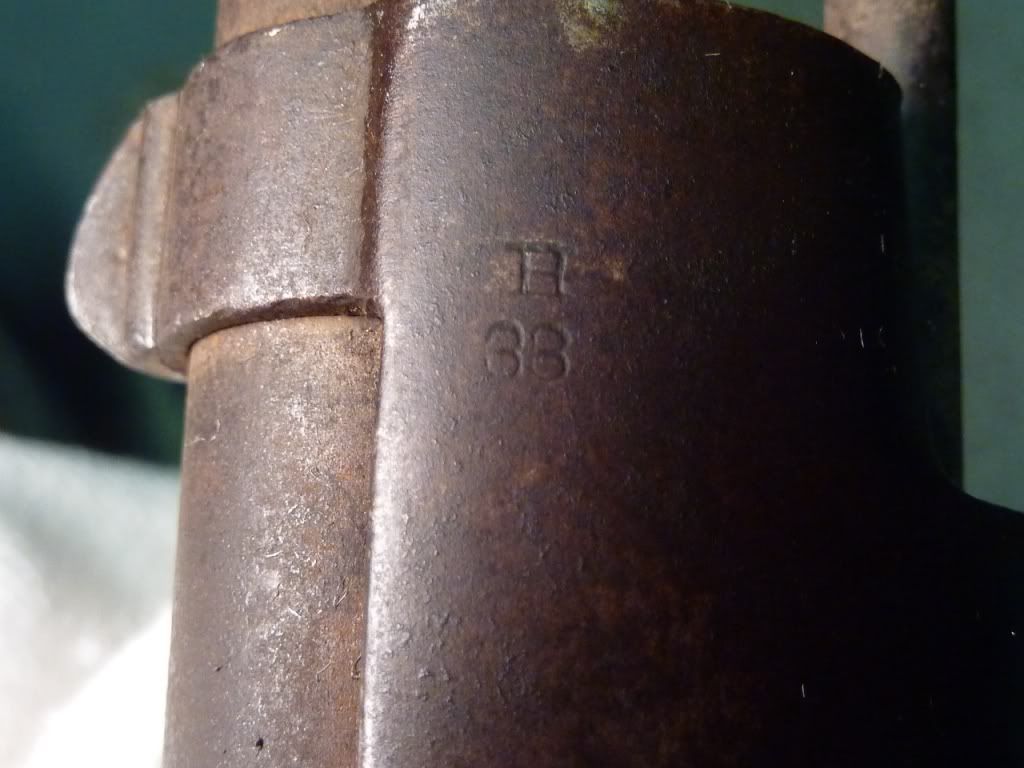steved
40 Cal.
- Joined
- Feb 11, 2004
- Messages
- 255
- Reaction score
- 20
I purchased the subject musket from a friend. It's literally an attic find, having been dug out of the rafters of his great aunt's estate. Probably hadn't seen the light of day in years. I've identified it as an M1816 flintlock musket that was converted by Remington in 1856 to the Maynard percussion system. It was refitted with a .69 cal rifled barrel. I'm not well schooled in the M1816 but from what I could dig up there apparently were a few "types" or variations of this musket during the decades it was in service. Can you tell by the stock architecture, barrel bands, trigger guard, etc which variant this musket was before the converstion? Approximate date it was manufactured? The only date I can find is the date on the lock plate (1856)
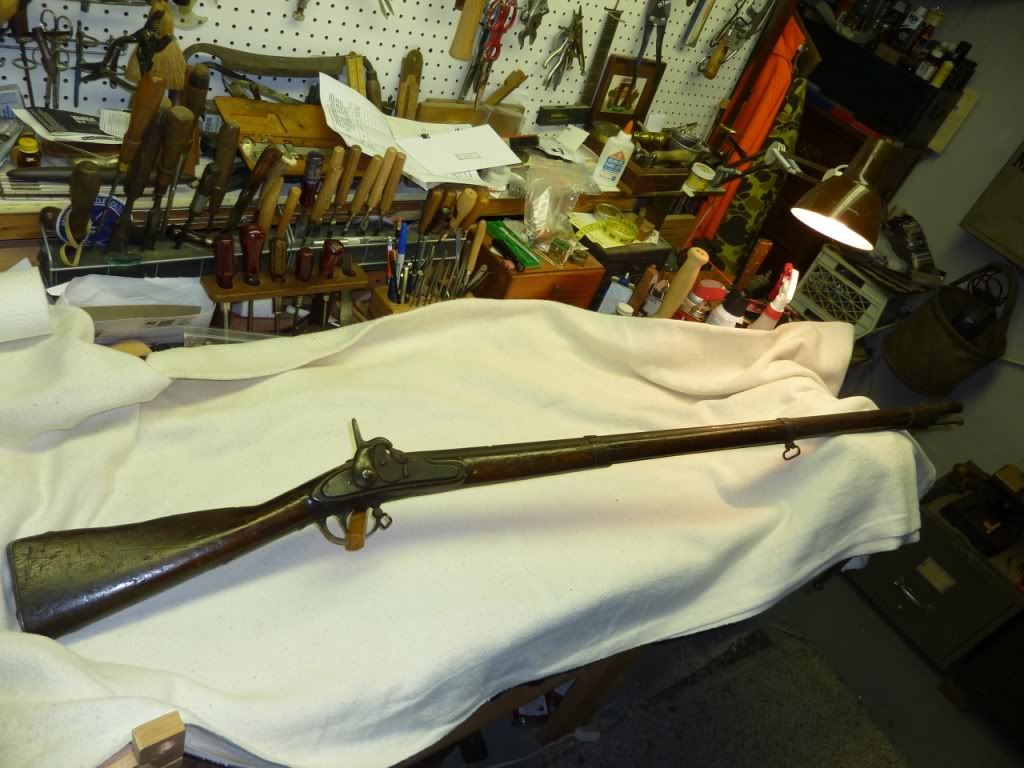
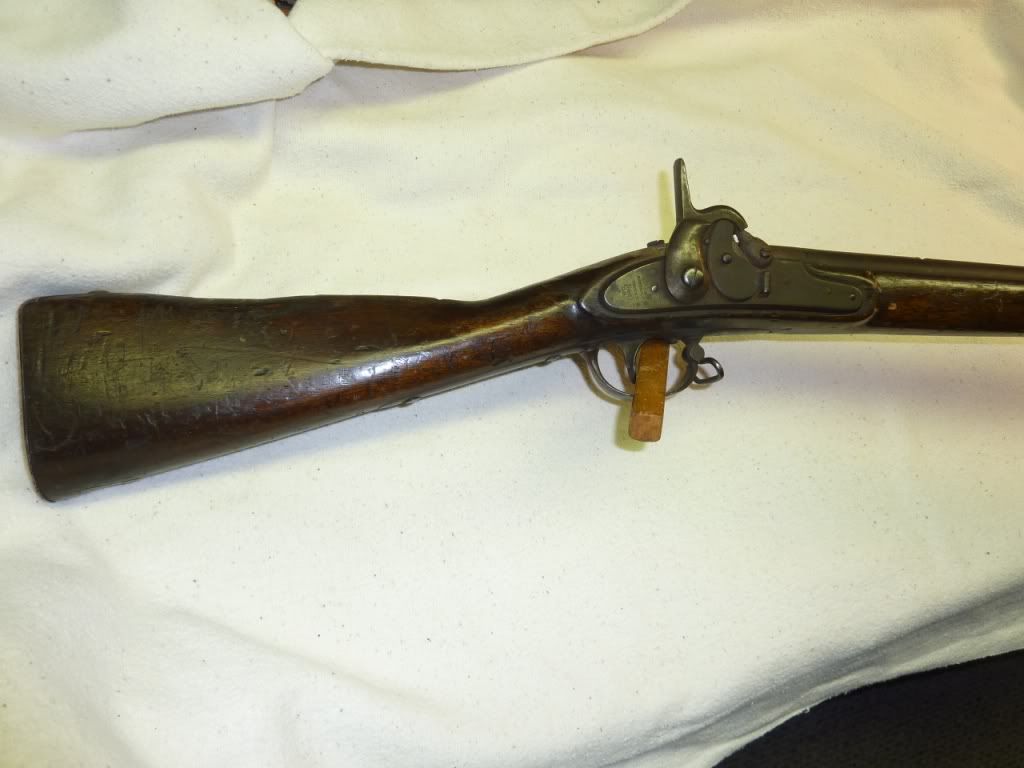
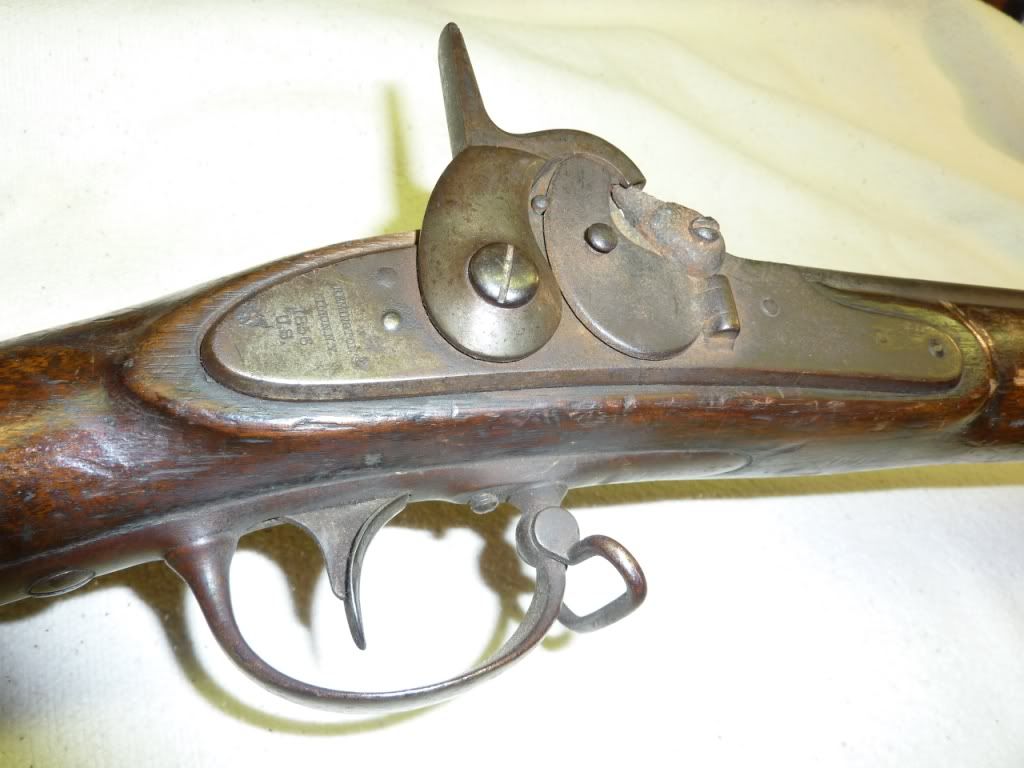
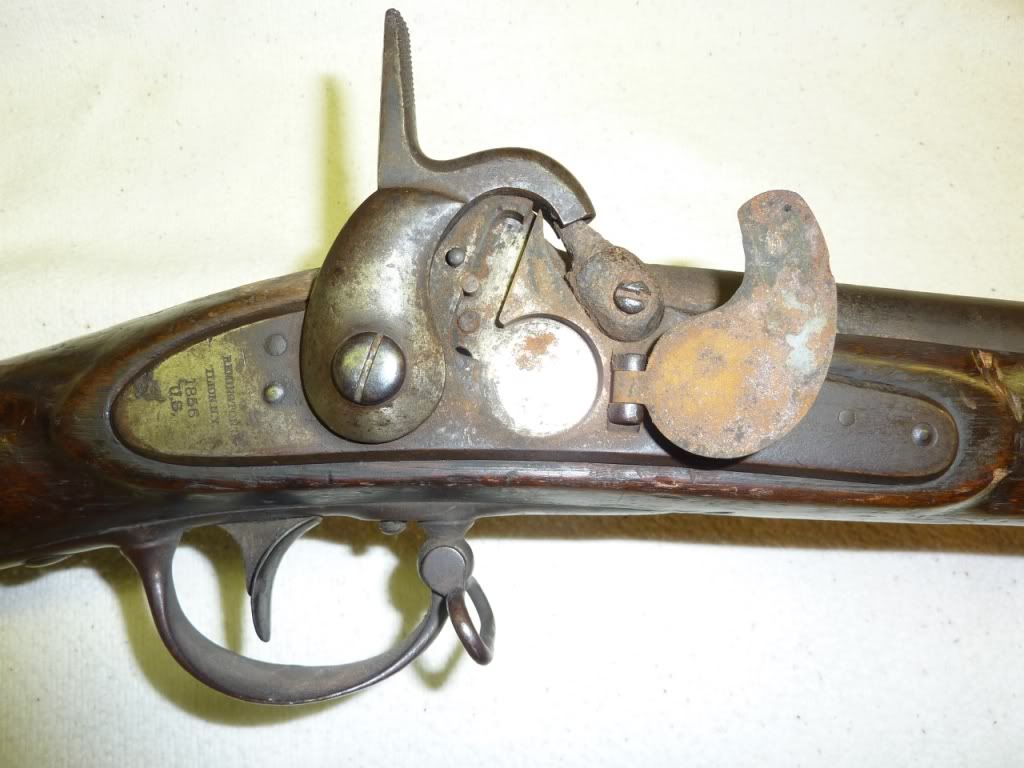
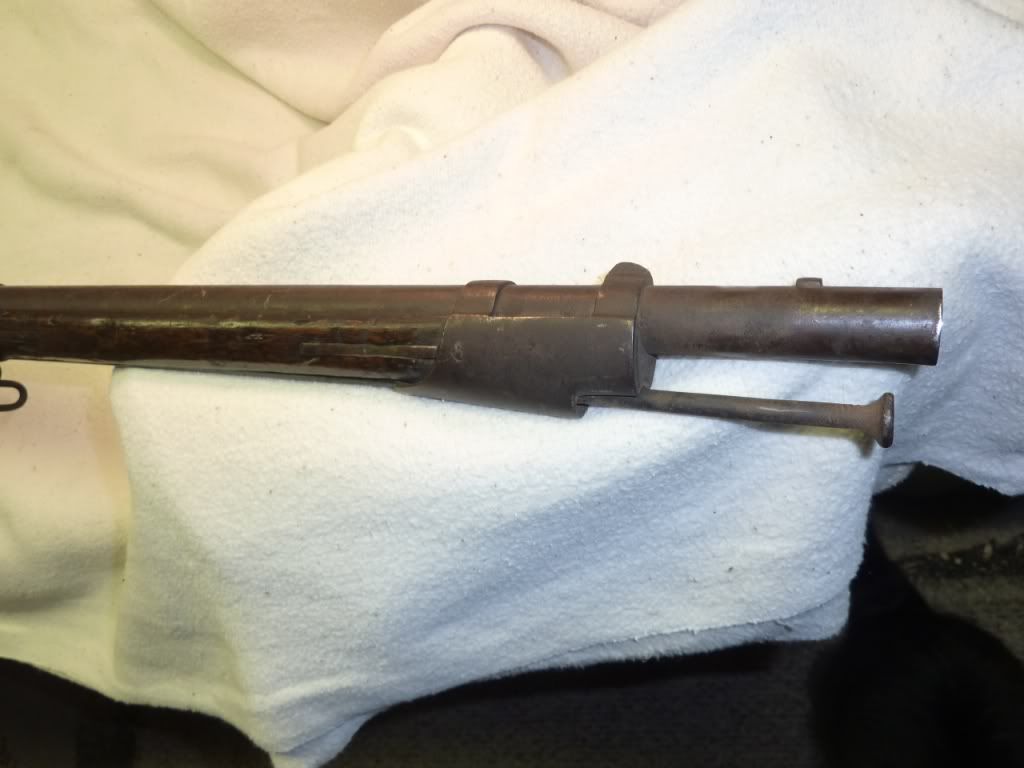
It's missing the rear sight and some of the Maynard internals but the lock funtions well otherwise. The breech appears as though it was pulled some time long ago and not properly indexed when the barrel was put back on. The screw hole for the rear sight now is not on the top center but canted to the right. There are also some markings on the stock, butt plate and front band that I can't figure out. I'll post those pictures next.





It's missing the rear sight and some of the Maynard internals but the lock funtions well otherwise. The breech appears as though it was pulled some time long ago and not properly indexed when the barrel was put back on. The screw hole for the rear sight now is not on the top center but canted to the right. There are also some markings on the stock, butt plate and front band that I can't figure out. I'll post those pictures next.





